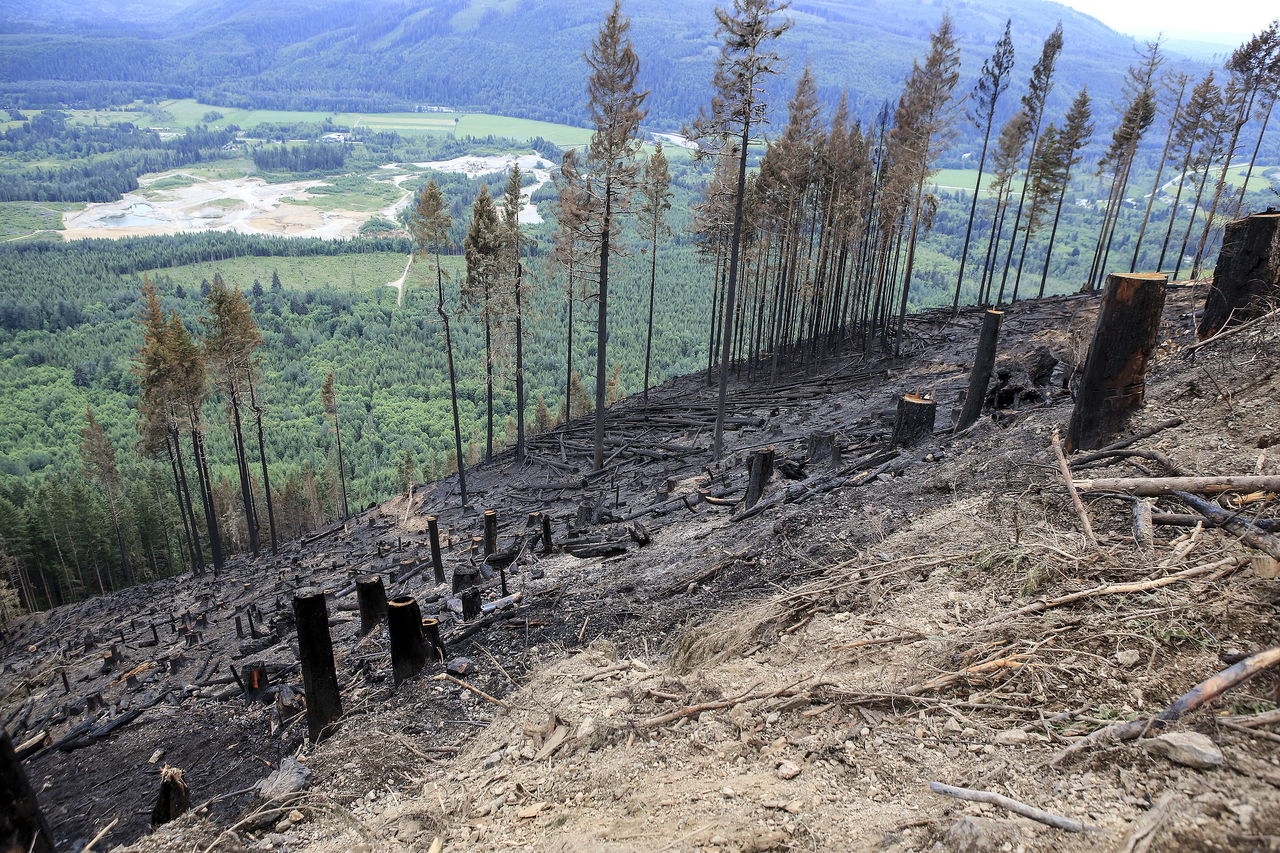GOLD BAR — It’s shaping up to be a nasty wildfire season.
Two fires that began last week in Oso and Gold Bar were larger than normal for this early in the spring.
“Years ago, (fire season) used to start after July 4,” said Janet Pearce, spokeswoman for the state Department of Natural Resources. “But anymore, the fires tend to start earlier.”
Pearce was surprised by the size of the burns in Oso and Gold Bar.
“To have one that’s 300 acres is alarming, especially because it’s on the west side,” she said.
As of Monday, the state Department of Natural Resources had been called out to 88 fires this year. Those fires have burned a total of 476 acres statewide. At the same point last year, the department had responded to 119 fires that burned 322 acres.
The January-to-May window this year and last year saw significantly more wildfires than Washington normally endures. On average over the previous 10 years, the department handled 67 fires between Jan. 1 and May 16. An average of 298 acres burned during those months.
To have large fires so soon doesn’t bode well for the months ahead.
“We are predicting a bad fire season, a really bad one,” Pearce said. “I would love it if we were wrong.”
This winter was wet, with mountain snowfall near normal levels and plenty of rain in the lowlands. The wet winter followed by unseasonably warm weather in recent weeks spurred rapid growth of grass, trees and brush.
“In July, when it’s real crispy, there’s more to fuel those wildfires,” Pearce said.
Predicting the fire season isn’t an exact science. It’s based on regional weather and moisture, said Jason Biermann, emergency management director for Snohomish County.
Any area near wilderness or timber is at risk, he said. People should be aware that their actions — campfires that aren’t doused, burning debris in their back yard, throwing a cigarette butt out a car window — can cause a fire even in areas that don’t look dry.
“We’re near the start of the typical fire season anyway, but I think because we had two fires so close together before Memorial Day, it seems like an early season,” Biermann said. “We had evacuations this early in the season. I think if these fires had been out in the wilderness farther, they might not have drawn as much attention, but those evacuation notices made it more pressing.”
It took hundreds of firefighters to beat back the first Snohomish County wildfires of the year this week.
The Proctor Creek fire between Gold Bar and Index was reported May 13 on private logging land and consumed nearly 300 acres before crews stopped it from spreading. Evacuation notices were issued and a shelter was set up at Sultan Middle School over the weekend. The evacuations later were called off and no homes were damaged.
West of Oso, the Hot Shot fire was spotted May 12 on steep, hazardous timber land. It reached an estimated 130 acres and took longer to contain because of tricky terrain and dangerous snags.
By Wednesday morning, both fires were contained and the number of firefighters working them had dropped from 300 to 198. Rainy weather, which aided firefighters over the weekend, was expected to return for the second half of the week.
Wildfire season tends to stretch fire departments thin. Emergency responders need to keep up with day-to-day calls such as house fires and medical emergencies. Large wildfires usually are handed over to a regional incident management team. That was the case for the Hot Shot and Proctor Creek fires, said Randy Shepard, a spokesman for the firefighting efforts.
“What was happening is there was really too much for the number of people and the resources they had,” Shepard said. “There was a lot of fuel.”
The causes of those fires are under investigation.
Eight of every 10 wildfires in Washington are human-caused, according to the DNR.
“Lightning strikes we can’t predict, but the human causes can be prevented,” Pearce said.
Two of the most common culprits are burning yard waste and failing to put out campfires. People should never assume a fire will go out on its own if left unattended, Pearce said. The wind can pick up an ember and carry it for miles until it lands on something flammable.
Officials recommend that homeowners clear brush, leaves and branches from around buildings, prune trees so branches are not near the ground or hanging over rooftops and store firewood at least 100 feet from the house and flammable materials in safe containers.
Kari Bray: 425-339-3439; kbray@heraldnet.com.
Learn more
For more tips on getting ready for fire season, go to firewise.org or contact your local fire department.
Talk to us
> Give us your news tips.
> Send us a letter to the editor.
> More Herald contact information.

























